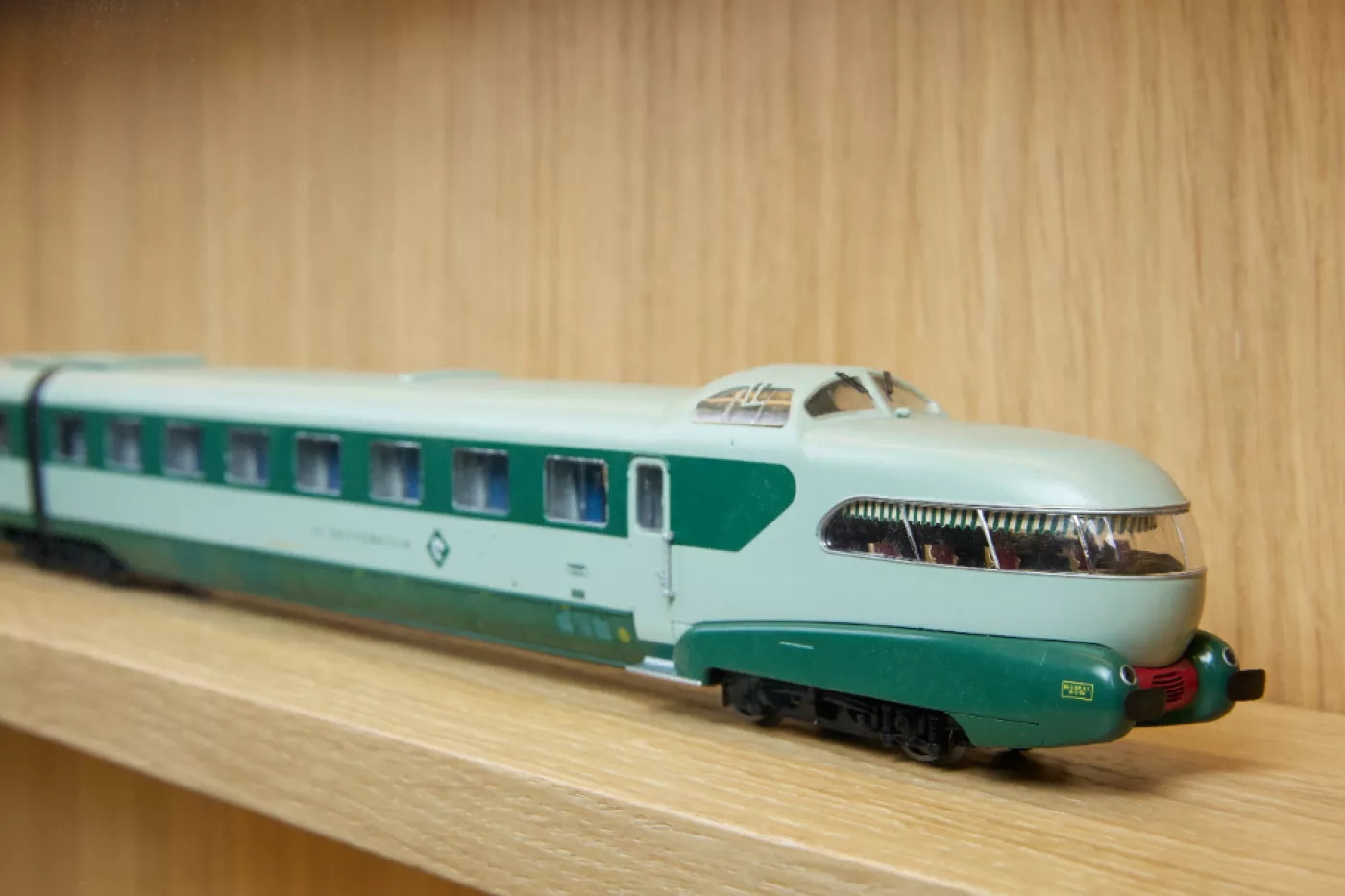Settebello and Arlecchino: the electric trains of Industrialization
If you're interested in the world of model railroading, you'll be pleased to discover new trains, immerse yourself in different eras, and expand your cultural knowledge. At Hzero, the Florentine museum dedicated to the miniature railway world, in addition to the extensive model railway, you can admire detailed reproductions of some of the most iconic and unforgettable trains in railway history. Need an example? The model of the FS ETR 300 electric train, also known as Settebello, and the ETR 250 electric train, also known as Arlecchino due to its eclectic internal checkered chrome design. These two trains have symbolized the industrial resurgence and have left a lasting impression among model railroading enthusiasts and railway enthusiasts alike. Let's delve into them!
What is the Settebello Train?
The FS ETR 300 electric train was a celebrated Italian luxury train, renowned for its elegance and speed. Manufactured in three units between 1952 and 1959 by the Italian company Società Italiana Ernesto Breda of Sesto San Giovanni in Milan, the ETR 300 train embodied all the stylistic elements of Made in Italy design, thanks to its unmistakable interiors designed by Gio Ponti and Giulio Minoletti. Due to its exclusive design, the train earned the nickname "Settebello," inspired by the Italian winning playing card. It reached speeds of 160-200 km/h (99-124 mph) on the Milan-Rome route and consisted of seven carriages and two panoramic lounges (at the front and rear of the trains) in first class, featuring large windows. The control cabin of the FS ETR 300 electric train was situated above the passenger area, giving it a distinctive appearance akin to a jet. Luxurious interiors, refined services, absolute comfort: traveling on the Settebello train meant experiencing a unique journey, comparable to that on the Orient Express. Passengers enjoyed the presence of highly trained and multilingual staff, a bar and restaurant carriage, a telephone booth, and air conditioning. However, in the 1970s, it was replaced by the Pendolino, designed by FIAT Ferroviaria, which was a faster and more modern model. The iconic status of the FS ETR 300 Settebello prompted the FS Foundation to begin restoring the functional, aesthetic, and internal components of the train in 2016. The last remaining unit was transferred to the Voghera Workshops and subsequently to the Porrena Workshops in Arezzo.
Where to See a Model of the Settebello Train
If you're wondering where you can see a model of the Settebello train, the answer is simple: at Hzero. The newly arranged exhibit, recently inaugurated by the Florentine museum dedicated to model railroading, also brings forth a precise, meticulous, and aesthetically valuable reproduction of the iconic luxury train. Hzero carries out a comprehensive and layered exploration of the miniature railway world, providing a place where visitors can fully immerse themselves in multisensory atmospheres, don the roles of passengers and engineers, travel with their imagination, and have a genuine experience. The exhibited models, including the large layout that stands with its aesthetic and architectural determination, are works of great mastery and technique; works of fine craftsmanship that can be appreciated not only by collectors and enthusiasts but also by the casually curious.
Discovering the ETR 250 Arlecchino
Similar to the Settebello, another iconic symbol of the railway world was undoubtedly the ETR 250 Arlecchino. But what is the Arlecchino train? What were its characteristics? Created in 1960 for the Rome Olympics, the ETR 250 was produced in only four units. It was an electric tilting train, part of the Pendolino train family developed by Fiat Ferroviaria. It could tilt laterally to provide greater stability and speed in curves, enhancing the quality of the journey and reducing travel times. The curious name "Arlecchino" was derived from the multi-colored pastel interior furnishings that distinguished each of the four carriages: green, yellow/gold, red, and blue. The ETR 250 Arlecchino served on various high-speed lines in Italy, providing fast and efficient connections between different cities. However, with the introduction of more modern high-speed trains, it was gradually retired from service. In its place, more advanced trains were introduced to further improve the Italian high-speed railway network. It represented one of the symbols of the country's economic recovery. The last unit was restored by the FS Foundation and has been offering tourist trips since 2019.
Where to see a model of the Arlecchino train
Charming, iconic, avant-garde, the model of the Arlecchino train is part of the same exhibition in the display cases on the first floor of the Florentine museum where you can also admire a reproduction of the Settebello train, among others. Visiting the Hzero museum means delving in an immersive atmosphere, populated by the layout and models, enriched with landscape and sound elements, exploring vivid and authentic scenarios, and enjoying moments of learning, discovery, and fun. Purchase your tickets online now.


